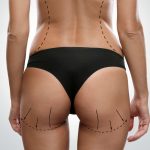Boob Jobs: What You Need to Know Before Getting One
Breast augmentation, commonly known as a boob job, is a surgical procedure that involves the use of implants or fat transfer to enhance the size and shape of a woman’s breasts. This procedure is popular among women who are dissatisfied with the size or shape of their breasts and want to improve their appearance. According to the American Society of Plastic Surgeons, breast augmentation is one of the most commonly performed cosmetic surgical procedures in the United States.
The procedure involves making an incision in the breast tissue and inserting an implant either behind the breast tissue or under the chest muscle. The type of implant used can vary, with the most common types being silicone and saline implants. The procedure can take several hours, and the recovery time can vary depending on the individual. It is important to note that breast augmentation is a major surgical procedure that carries risks, including infection, bleeding, and scarring. It is essential to discuss the potential risks and benefits of the procedure with a qualified plastic surgeon before making a decision.
What Are Boob Jobs?
Breast augmentation, commonly known as a boob job, is a cosmetic surgical procedure designed to enhance the size and shape of a woman’s breasts. The procedure involves the placement of breast implants, which can be filled with saline or silicone gel, or the transfer of fat from other parts of the body to the breasts.
Breast augmentation is a popular cosmetic procedure that can help women achieve a more proportionate and aesthetically pleasing figure. It is often sought out by women who are dissatisfied with the size or shape of their breasts, or who have experienced a loss of breast volume due to pregnancy, weight loss, or aging.
There are several different types of breast implants available, each with its own advantages and disadvantages. Saline implants are filled with a sterile saline solution and are generally considered safer than silicone implants, as they can be absorbed by the body if they rupture. Silicone implants are filled with a silicone gel and are often preferred for their more natural look and feel.
The procedure itself typically takes between one and two hours and is performed under general anesthesia. Recovery time can vary depending on the individual, but most women are able to return to work and other normal activities within a week or two. It is important to follow all post-operative instructions provided by the surgeon to ensure proper healing and minimize the risk of complications.
Types of Boob Jobs
There are several types of boob jobs that women can choose from to enhance the appearance of their breasts. These procedures can address a variety of concerns, from increasing the size of the breasts to lifting and reshaping sagging breasts. In this section, we will explore the three most common types of boob jobs: breast augmentation, breast lift, and breast reduction.
Breast Augmentation
Breast augmentation is a surgical procedure that involves the insertion of implants to increase the size of the breasts. There are two types of breast implants: saline and silicone. Saline implants are filled with sterile saltwater, while silicone implants are filled with silicone gel. The type of implant used will depend on the patient’s preferences and the surgeon’s recommendations.
Breast augmentation can be done through several incision types, including inframammary (under the breast), periareolar (around the nipple), and transaxillary (in the armpit). The surgeon will place the implant either behind the breast tissue or under the chest muscle, depending on the patient’s anatomy and the desired outcome.
Breast Lift
Breast lift, also known as mastopexy, is a surgical procedure that lifts and reshapes sagging breasts. This procedure is ideal for women who have lost breast volume due to weight loss, pregnancy, or aging. During the procedure, the surgeon will remove excess skin and reposition the nipple and areola to a higher position.
Breast lift can be done through several incision types, including anchor (around the areola, down to the breast crease, and along the breast crease), lollipop (around the areola and down to the breast crease), and donut (around the areola only). The choice of incision type will depend on the degree of sagging and the patient’s anatomy.
Breast Reduction
Breast reduction, also known as reduction mammoplasty, is a surgical procedure that reduces the size and weight of the breasts. This procedure is ideal for women who experience back, neck, and shoulder pain due to the weight of their breasts. During the procedure, the surgeon will remove excess breast tissue, skin, and fat to achieve a more proportionate breast size.
Breast reduction can be done through several incision types, including anchor (around the areola, down to the breast crease, and along the breast crease), lollipop (around the areola and down to the breast crease), and donut (around the areola only). The choice of incision type will depend on the degree of reduction and the patient’s anatomy.
In summary, breast augmentation, breast lift, and breast reduction are the most common types of boob jobs. Each procedure has its own benefits and drawbacks, and the choice of procedure will depend on the patient’s goals, anatomy, and surgeon’s recommendations. It is important to choose a board-certified plastic surgeon and have a thorough consultation to determine the best course of action.
Choosing the Right Surgeon
Breast augmentation surgery is a major decision, and choosing the right surgeon is crucial to ensuring a successful outcome. Here are some factors to consider when selecting a plastic surgeon for your breast augmentation:
Board Certification
The first and most important factor to consider when choosing a plastic surgeon for breast augmentation is board certification. Look for a surgeon who is certified by the American Board of Plastic Surgery (ABPS) or the Royal College of Physicians and Surgeons of Canada (RCPSC). Board certification ensures that the surgeon has undergone rigorous training and has met strict standards of safety and professionalism.
Experience
Experience is also an essential factor to consider when selecting a plastic surgeon for breast augmentation. You want a surgeon who has performed many breast augmentations and has a proven track record of success. Ask to see before-and-after photos of the surgeon’s previous patients to get an idea of their skill and expertise.
Communication
Good communication is critical when it comes to breast augmentation surgery. You want a surgeon who takes the time to listen to your goals and concerns and who can explain the procedure in clear, understandable terms. Look for a surgeon who is patient, compassionate, and willing to answer all of your questions.
Facility Accreditation
The facility where your breast augmentation surgery will take place should also be accredited by a recognized organization, such as the Accreditation Association for Ambulatory Health Care (AAAHC) or the Joint Commission. Accreditation ensures that the facility meets strict standards for safety, cleanliness, and quality of care.
Cost
While cost should not be the primary factor in choosing a plastic surgeon for breast augmentation, it is still an important consideration. Make sure you understand all of the costs associated with the procedure, including the surgeon’s fee, facility fee, anesthesia fee, and any other expenses. Ask about financing options and payment plans if necessary.
In summary, choosing the right plastic surgeon for breast augmentation is a crucial step in achieving your desired results. Look for a board-certified surgeon with extensive experience, good communication skills, and a facility that is accredited. Don’t forget to consider the cost as well, but don’t let it be the only factor in your decision.
The Procedure
Breast augmentation, also known as a boob job, is a surgical procedure that can enhance the size and shape of the breasts. The procedure itself usually takes about one to two hours and is typically performed on an outpatient basis. Here are the steps of the procedure broken down into sub-sections.
Consultation and Planning
Before undergoing breast augmentation, patients will typically have a consultation with their plastic surgeon to discuss their goals, expectations, and medical history. During this consultation, the surgeon will evaluate the patient’s breast size and shape, skin quality, and nipple position. They will also discuss the various types of breast implants available, such as saline or silicone, and the different incision and implant placement options.
Anesthesia
Once the patient is in the operating room, they will be given anesthesia to ensure they are comfortable and pain-free during the procedure. Depending on the patient’s preference and the surgeon’s recommendation, either general anesthesia or local anesthesia with sedation may be used.
Incision and Implant Placement
There are several options for incision placement, including under the breast, around the nipple, or in the armpit. The choice of incision placement will depend on the patient’s anatomy and the type of implant being used. After making the incision, the surgeon will create a pocket either behind or in front of the chest muscle to place the implant.
Closing the Incisions
Once the implant is in place, the surgeon will close the incisions with sutures or surgical tape. The patient will then be taken to a recovery area, where they will be monitored until they are ready to go home. Recovery time can vary depending on the patient, but most patients can return to work and normal activities within a week or two.
Overall, breast augmentation is a safe and effective procedure that can help women achieve their desired breast size and shape. However, it is important to choose a qualified and experienced plastic surgeon and to fully understand the risks and benefits of the procedure before undergoing surgery.
Recovery and Aftercare
After undergoing breast augmentation surgery, it is important to take proper care of your body during the recovery process. Here are some tips to ensure a smooth and successful recovery:
Immediately after Surgery
Immediately after the procedure, you will be taken into a recovery area for close monitoring. Your breasts will be wrapped in gauze dressings, and an elastic bandage or support bra will be used to minimize swelling and support the breasts as they heal. You may experience some discomfort, swelling, and bruising, but this is normal and should subside over time.
First Week after Surgery
During the first week of recovery, it is important to rest and avoid any strenuous activities. You should also avoid lifting anything heavy, including children and pets. Your surgeon will prescribe pain medication to help manage any discomfort.
Weeks Two to Six
During this time, you may begin to feel more comfortable and may be able to return to work and some light activities. However, you should still avoid any activities that involve lifting or straining the chest muscles. Your surgeon may also recommend wearing a compression garment to help reduce swelling.
Weeks Six to Eight
Around this time, you may be able to resume more normal activities, including exercise, but you should still avoid any activities that put strain on the chest muscles. Your surgeon will provide specific instructions on when it is safe to resume these activities.
Long-Term Care
After the initial recovery period, it is important to continue to take care of your breasts. This includes:
- Regularly checking for any changes in the size, shape, or texture of your breasts
- Wearing a supportive bra to help maintain the shape of your breasts
- Avoiding excessive sun exposure, which can cause damage to the skin and affect the appearance of your breasts
- Following a healthy diet and exercise routine to maintain overall health and wellness.
By following these guidelines, you can ensure a successful recovery and maintain the results of your breast augmentation surgery for years to come.
Potential Risks and Complications
Breast augmentation surgery, commonly known as a “boob job,” is a cosmetic procedure that involves inserting breast implants to enhance the size and shape of the breasts. While it is a popular procedure, it is important to be aware of the potential risks and complications that can arise from breast augmentation surgery.
Common Risks and Complications
Some of the most common risks and complications associated with breast augmentation surgery include:
- Anesthesia risks
- Bleeding
- Infection
- Pain
- Swelling
- Changes in nipple or breast sensation
- Scarring
- Capsular contracture, which is the hardening of scar tissue around the implant
- Implant rupture or leakage
- Need for additional surgeries
Rare Risks and Complications
While rare, there are some serious risks and complications associated with breast augmentation surgery, including:
- Breast implant-associated anaplastic large cell lymphoma (BIA-ALCL), a type of cancer that can develop in the scar tissue surrounding the implant
- Breast implant-associated squamous cell carcinoma (BIA-SCC), another type of cancer that can develop in the scar tissue surrounding the implant
- Seroma, which is the accumulation of fluid around the implant
- Necrosis, which is the death of breast tissue
- Hematoma, which is the collection of blood around the implant
It is important to note that the risk of developing BIA-ALCL or BIA-SCC is extremely rare, with only a small number of cases reported worldwide. However, if you experience any unusual symptoms after breast augmentation surgery, such as persistent pain, swelling, or lumps, it is important to contact your doctor immediately.
Minimizing Risks and Complications
To minimize the risks and complications associated with breast augmentation surgery, it is important to choose a qualified and experienced plastic surgeon who can guide you through the process and help you make informed decisions about the type of implant and placement that is best for you. Additionally, following your surgeon’s post-operative instructions and attending all follow-up appointments is crucial for a successful recovery.
In conclusion, while breast augmentation surgery can provide significant aesthetic benefits, it is important to be aware of the potential risks and complications. By taking the necessary precautions and working closely with a qualified plastic surgeon, you can minimize these risks and achieve the desired results.
Costs and Financing
Breast augmentation surgery can be a significant investment, and the cost can vary depending on several factors. According to the American Society of Plastic Surgeons, the average cost of breast augmentation surgery is $4,516, but this does not include other related expenses like anesthesia and operating room facilities. The total cost of breast augmentation can range from $3,800 to $11,200, depending on the type of implant, the surgeon’s fee, and other factors.
When considering the cost of breast augmentation, it is essential to understand that the price can vary depending on the type of implant used. A cosmetic costs study found that breast augmentation with a silicone implant can cost about $1,000 more than a saline implant. So if we take the average cost of silicone implants and factor in the study results, saline implants cost around $7,300. Breast augmentations with fat transfer cost around $8,000 to $10,000.
Financing options are available for those who cannot pay the full cost upfront. Breast augmentation financing is an umbrella term that makes it possible to fund your boob job via monthly payment plans. Personal loans, in-house payment plans backed by third-party companies, and credit cards allow you to pay the plastic surgeon in advance and then repay the lender later on through installments.
Some plastic surgery practices offer in-house financing options, while others partner with third-party financing companies like CareCredit or Alphaeon Credit. These companies offer financing options with competitive interest rates and flexible repayment terms. CareCredit, for example, offers financing options with interest rates as low as 0% for qualified applicants.
Before signing up for financing, it is essential to understand the terms and conditions of the loan. Make sure you understand the interest rate, repayment terms, and any fees associated with the loan. It is also important to choose a reputable financing company that has a proven track record of providing reliable and transparent financing options.
Conclusion
Breast augmentation, or “boob jobs,” is a popular cosmetic surgery procedure that involves using implants or fat transfer to increase breast size. While the procedure has been around for several decades, it has become increasingly popular in recent years, with many women opting for breast augmentation to improve their self-esteem and confidence.
While breast augmentation can provide many benefits, it is important to consider the potential risks and complications associated with the procedure. These include infection, bleeding, scarring, and implant rupture, among others. It is important to discuss these risks with a qualified plastic surgeon before undergoing breast augmentation.
In addition to the physical risks, it is also important to consider the emotional and psychological impact of breast augmentation. While the procedure can improve self-esteem and confidence, it is important to have realistic expectations and understand that breast augmentation is not a cure-all for body image issues.
Overall, breast augmentation can be a safe and effective procedure for women who are seeking to improve their appearance and boost their self-confidence. However, it is important to carefully consider the risks and benefits of the procedure and to choose a qualified plastic surgeon who can help guide you through the process.





